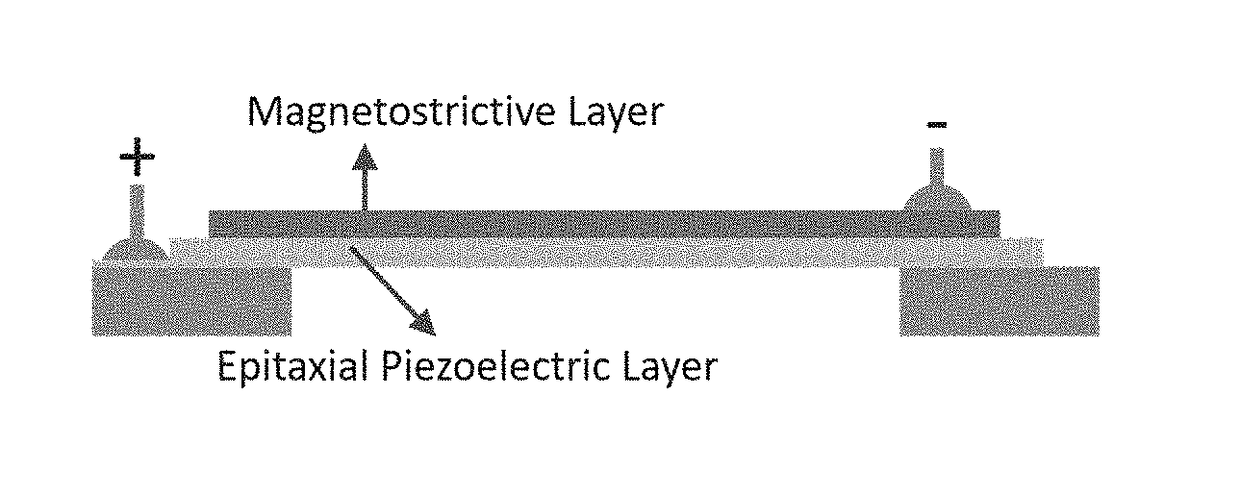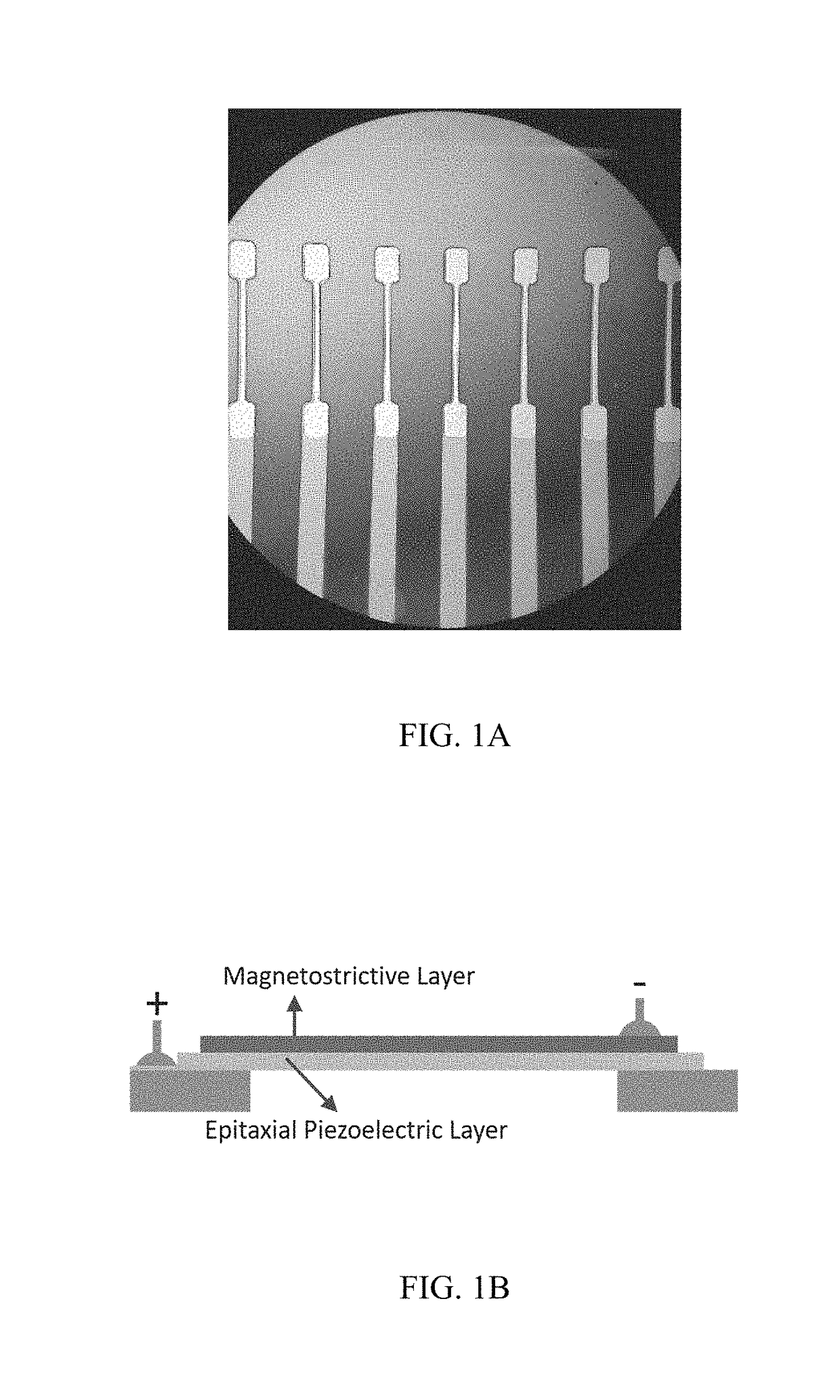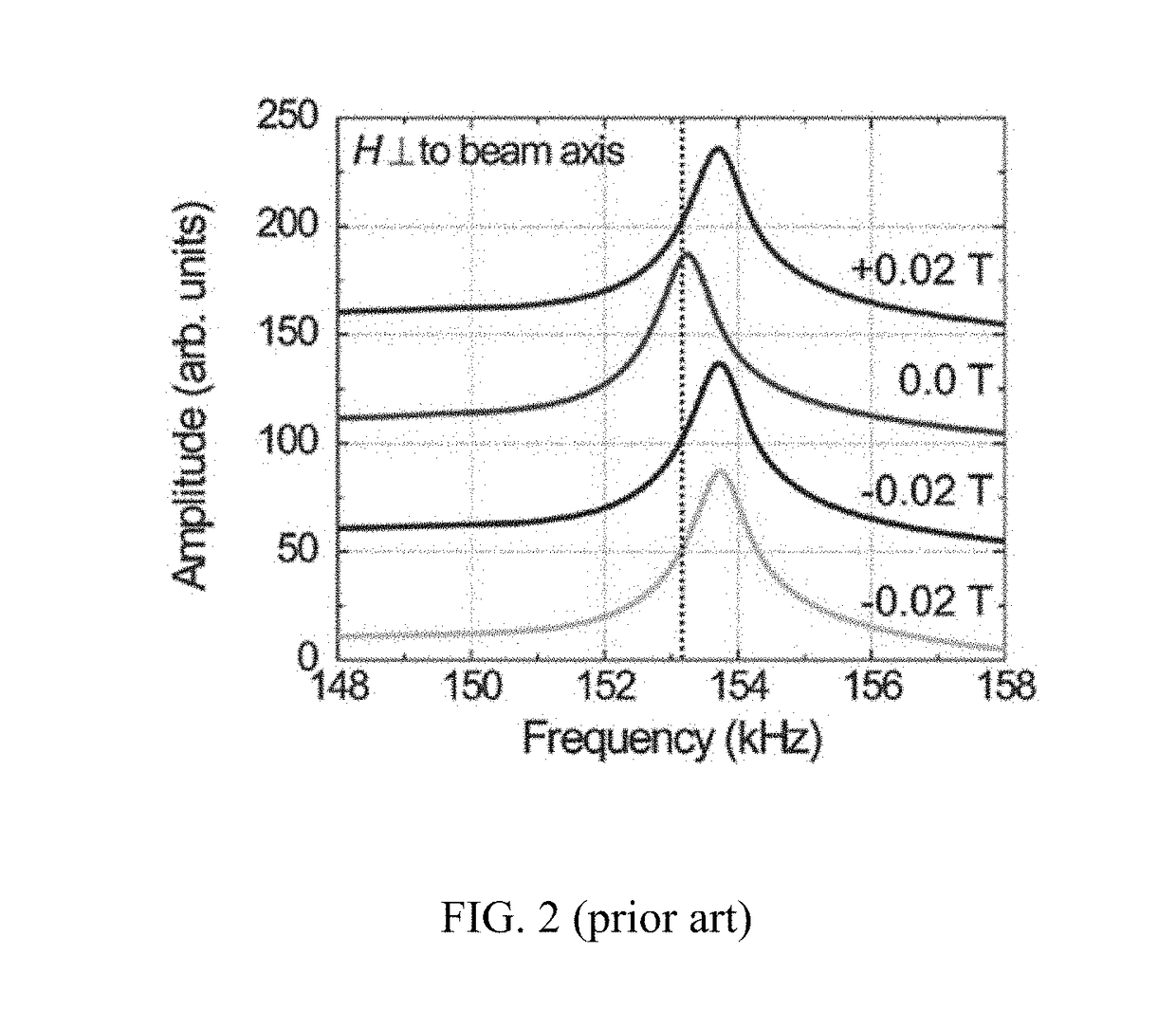Ultra-low power magnetoelectric magnetic field sensor
a magnetoelectric magnetic field and ultra-low power consumption technology, applied in the field of magnetic sensors, can solve the problems that the present generation of magnetic field sensors do not exhibit the desired level of sensitivity, and achieve the effect of ultra-low power consumption
- Summary
- Abstract
- Description
- Claims
- Application Information
AI Technical Summary
Benefits of technology
Problems solved by technology
Method used
Image
Examples
Embodiment Construction
[0016]The present invention provides a passive, integrated MEMS based ME magnetic resonator as a magnetic sensor. Enhanced ME sensor performance is achieved through the use of a structural resonance MEMS approach combined with low-power modulation (mechanical or electric) techniques using the non-linear regime of the sensor to reduce the influence of background magnetic and vibrational noise. Resonant operation also allows for signal processing at frequencies above the 1 / f crossover for additional noise reduction (allowing for detection of DC and low-frequency near −DC magnetic fields). Noise reduction strategies make use of resonant frequency and low-cost wafer-scale batch fabrication of micro-nanoscale devices combined with ensemble averaging.
[0017]This invention realizes the first on-chip micro-resonator magnetic sensor with micron and sub-micron dimensionality (FIGS. 1A and 1B). The micro-beam is a bilayer thin film heterostructure of a magnetostrictive layer (Fe, Co, Ni, FeCo, ...
PUM
 Login to View More
Login to View More Abstract
Description
Claims
Application Information
 Login to View More
Login to View More - R&D
- Intellectual Property
- Life Sciences
- Materials
- Tech Scout
- Unparalleled Data Quality
- Higher Quality Content
- 60% Fewer Hallucinations
Browse by: Latest US Patents, China's latest patents, Technical Efficacy Thesaurus, Application Domain, Technology Topic, Popular Technical Reports.
© 2025 PatSnap. All rights reserved.Legal|Privacy policy|Modern Slavery Act Transparency Statement|Sitemap|About US| Contact US: help@patsnap.com



